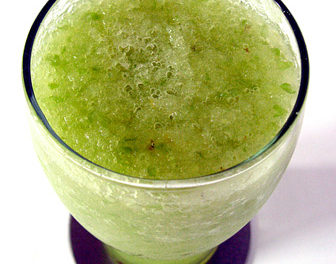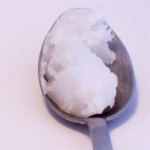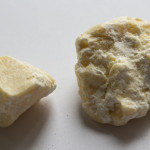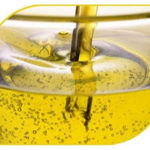Healthy Fats in Smoothies: What You Should Pay Attention to

Are you adding healthy fats to your green juices and smoothies? If not, you are missing out big time!
You have to eat fat to lose fat!
I don’t know the origin of this quote, but it is entirely true. You simply have to switch your body to burning fat rather than burning glucose, and the best way to do that is to stop avoiding fat, that is, to stop avoiding healthy fat.
Probably because most people don’t know how to distinguish between healthy and unhealthy fats, they put all fats into the same category: ALWAYS AVOID!
Which is really sad.
Rather than avoiding all fats, learn which ones are beneficial and how to use them properly and stick with them.
Adding healthy fat to your juices and smoothies will help the faster and easier absorption of nutrients from the vegetables. A lot of vitamins (almost all of them, in fact) and enzymes are fat soluble, so if there is no fat in your green smoothies, it is as if you are throwing away a lot of the little healthy nutrients.

In this post I will show you a some healthy fats that you can add to your green smoothies for maximum health benefits.
Table of Contents
- 1 Types of Beneficial Fat to Add to Smoothies
- 2 Cold Pressed Coconut Oil
- 3 Avocado
- 4 Organic Grass-fed Ghee
- 5 Organic Grass-fed Butter
- 6 MCT Oil
- 7 Cocoa butter
- 8 Extra Virgin Olive Oil
- 9 Types of Fat to Avoid
- 10 All Vegetable Oils
- 11 Trans Fats and Margarine and other artificial fats
- 12 What Else You Should Know
- 13 Related Posts
Types of Beneficial Fat to Add to Smoothies
-
Cold Pressed Coconut Oil
 If you can stand the specific taste of coconut oil (which is delicious, but some people may have problems with it), this is a great healthy fat. More than 60 percent of it is the most stable saturated fat, and there is virtually no poly-unsaturated fat, which is easily spoiled and oxidized. Not the mention that a good portion of it is the very beneficial MCT fatty acids. We shouldn’t forget the well known antibacterial, anti-fungal, and anti-microbial properties of this oil. So, add one tablespoon of cold pressed coconut oil to your smoothie and you won’t regret it.
If you can stand the specific taste of coconut oil (which is delicious, but some people may have problems with it), this is a great healthy fat. More than 60 percent of it is the most stable saturated fat, and there is virtually no poly-unsaturated fat, which is easily spoiled and oxidized. Not the mention that a good portion of it is the very beneficial MCT fatty acids. We shouldn’t forget the well known antibacterial, anti-fungal, and anti-microbial properties of this oil. So, add one tablespoon of cold pressed coconut oil to your smoothie and you won’t regret it. -
Avocado
 So much is known about the health benefits of avocado, that I won’t repeat anything here. In this case, the main share of fatty acid content goes to monounsaturated fat, which is the same type of fat found in olives. I would strongly urge you to add a piece of avocado to your smoothies, rather than avocado oil. The fat will come naturally with all the other useful compounds.
So much is known about the health benefits of avocado, that I won’t repeat anything here. In this case, the main share of fatty acid content goes to monounsaturated fat, which is the same type of fat found in olives. I would strongly urge you to add a piece of avocado to your smoothies, rather than avocado oil. The fat will come naturally with all the other useful compounds. -
Organic Grass-fed Ghee
Grass fed Ghee is obtained from Grass fed butter. While butter is great addition to your juices and smoothies (even coffee, has anyone heard of Bulletproof coffee?), ghee is even better. The reason is simple. Ghee is healthier. When you prepare Ghee, you remove the remaining lactose and casein from the butter. So, ghee can be used even by people who are lactose or casein intolerant.
-
Organic Grass-fed Butter
See the point above. If you don’t have Ghee, use butter. It is still a good choice, as long as it is organic and comes from animals that have been grass fed.
-
MCT Oil
MCT Oil stands for Medium Chain Triglycerides Oil. It is the distilled version of Coconut Oil, where all but the most useful medium size fats are removed. When you get a lot of medium chain fats, your body can use them more efficiently as a fuel, switching the power plants of your cells into a fat burning mode. It helps you feel better, more energized and in promotes burning body fat as well.
-
Cocoa butter
 Cocoa butter in drinks is great. It is extracted from cocoa, often before making chocolate, to be replaced (sadly ) with cheaper and less healthy vegetable oils. But you can buy it preferably in its organic form and add some of it in your smoothies. You might need to warm it up a little bit before mixing it in your smoothie as it can be pretty stiff at room temperature.
Cocoa butter in drinks is great. It is extracted from cocoa, often before making chocolate, to be replaced (sadly ) with cheaper and less healthy vegetable oils. But you can buy it preferably in its organic form and add some of it in your smoothies. You might need to warm it up a little bit before mixing it in your smoothie as it can be pretty stiff at room temperature. -
Extra Virgin Olive Oil
Extra Virgin Olive Oil can be a great addition to your green smoothies. It is rich in monounsaturated fatty acids, so it can still go rancid easily. Keep it in a cold place and away from direct sunlight. Always use it cold.
Types of Fat to Avoid
-
All Vegetable Oils
 The first problem with vegetable oils is that they are highly unstable. They are very sensitive to heat and sunlight, they oxidize, and are spoiled easily. They should never be heated and used for cooking. While they could be used cold, at least in principle, the other problem with them is they contain a lot of omega-6 poly-unsaturated fatty acids. The omega-6’s are pro-inflammatory, so you wouldn’t want too much of them in your diet. Needless to say our standard diet is packed with omega-6 in one form or another. If you don’t want too much inflammation, you’d better stay away from all vegetable oils, hot or cold.
The first problem with vegetable oils is that they are highly unstable. They are very sensitive to heat and sunlight, they oxidize, and are spoiled easily. They should never be heated and used for cooking. While they could be used cold, at least in principle, the other problem with them is they contain a lot of omega-6 poly-unsaturated fatty acids. The omega-6’s are pro-inflammatory, so you wouldn’t want too much of them in your diet. Needless to say our standard diet is packed with omega-6 in one form or another. If you don’t want too much inflammation, you’d better stay away from all vegetable oils, hot or cold. -
Trans Fats and Margarine and other artificial fats
This is probably the worst type. Never use them. They are man-made fats and our body doesn’t know what to do with them. The reason they were invented in the first place was to stabilize the highly volatile vegetable oils. So, for example, they invented margarine to stabilize the sunflower oil. They are now slowly but surely getting out of circulation. As a side note, watch out for the hidden sources of trans oils (biscuits, margarine, cakes, crackers, creams, etc.).
What Else You Should Know
Be careful with fats if you eat a lot of carbs.
If you have been following the usual advice of reducing fats in your diet as much as possible, don’t start off too hard. Gradually introduce them in your diet, while at the same time reducing the highly processed and refined carbs.
Don’t mix fats and carbs, even if they belong to the category of healthy fats. Not a good strategy. If you are going to eat fats, eat them with a lot of non-starchy green vegetables. Or as we already suggested, add them to your refreshing green smoothies.
To your health! Cheers!

Leave a comment